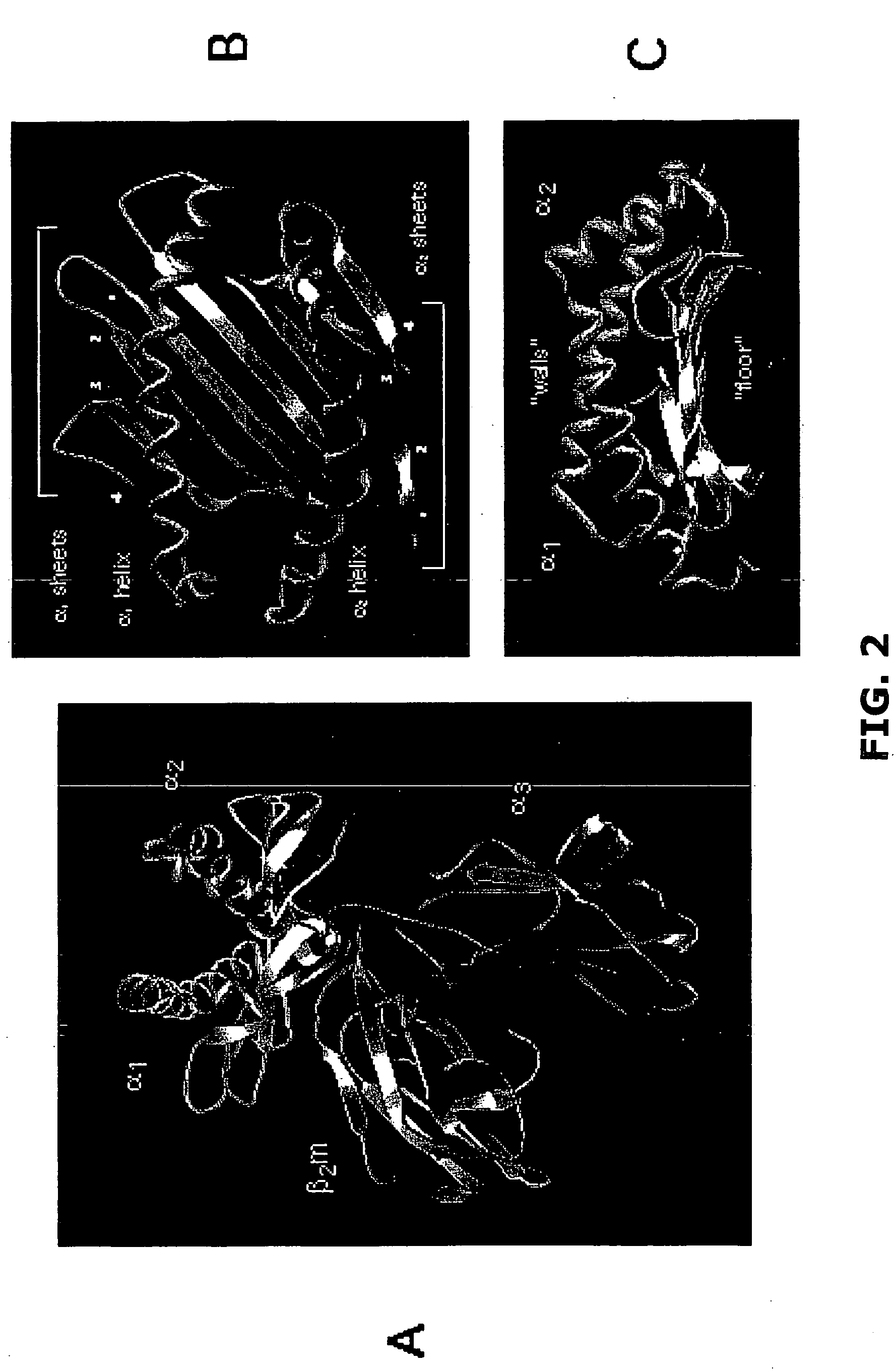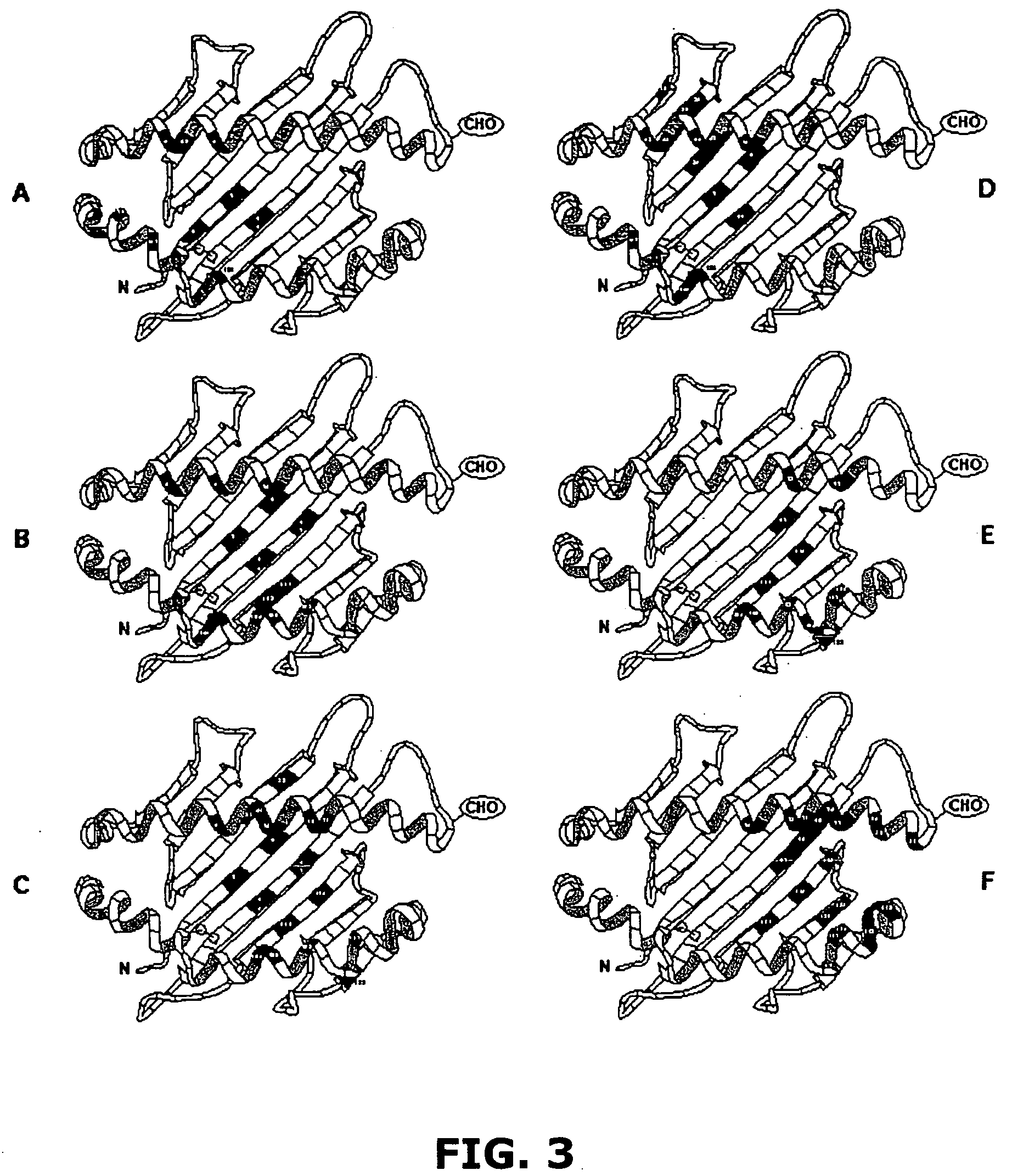Method and apparatus for the production of soluble MHC antigens and uses thereof
a technology of soluble mhc and antigens, applied in the field of methods and apparatus for the production of soluble mhc antigens, can solve the problems of limited understanding of precisely, affecting the knowledge of how polymorphism specifically affects the natural presentation of peptide epitopes upon the cell surface, and affecting the understanding of precisely
- Summary
- Abstract
- Description
- Claims
- Application Information
AI Technical Summary
Benefits of technology
Problems solved by technology
Method used
Image
Examples
Embodiment Construction
[0114] Before explaining at least one embodiment of the invention in detail by way of exemplary drawings, experimentation, results, and laboratory procedures, it is to be understood that the invention is not limited in its application to the details of construction and the arrangement of the components set forth in the following description or illustrated in the drawings, experimentation and / or results. The invention is capable of other embodiments or of being practiced or carried out in various ways. Also, it is to be understood that the phraseology and terminology employed herein is for the purpose of description and should not be regarded as limiting.
[0115] As described hereinabove, characterizing naturally processed HLA class I and class II ligands is a key element behind the basic understanding of how polymorphism impacts ligand presentation. However, technical and scientific challenges including both extreme sample heterogeneity and limited sample sizes complicate such examin...
PUM
| Property | Measurement | Unit |
|---|---|---|
| surface area | aaaaa | aaaaa |
| volumes | aaaaa | aaaaa |
| total mass | aaaaa | aaaaa |
Abstract
Description
Claims
Application Information
 Login to View More
Login to View More - R&D
- Intellectual Property
- Life Sciences
- Materials
- Tech Scout
- Unparalleled Data Quality
- Higher Quality Content
- 60% Fewer Hallucinations
Browse by: Latest US Patents, China's latest patents, Technical Efficacy Thesaurus, Application Domain, Technology Topic, Popular Technical Reports.
© 2025 PatSnap. All rights reserved.Legal|Privacy policy|Modern Slavery Act Transparency Statement|Sitemap|About US| Contact US: help@patsnap.com



